
The combination between solar panel installation costs, electricity rates, and market incentives offer a valuable alternative that allows you to save money on your utility bills and contribute in the fight against climate change. However, one of these elements appears to be at risk, according to latest events in some jurisdictions that seem to jeopardize the whole solar PV industry in the US.
Net metering is a billing mechanism that offers the chance for those with photovoltaic systems installed on their homes to receive a credit for every kWh that is injected back to the grid, thanks to the installation of a bidirectional energy meter that runs backwards when excess solar power is generated. Despite the fact that the mechanism is not established at Federal level, over 38 States have mandatory net metering rules.
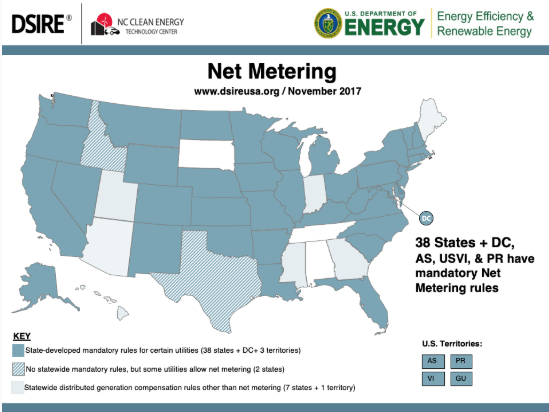
New concerns in the residential and commercial sector have risen due to the promotion of bill HF669 in the state of Iowa. This bill is believed to remove the net metering mechanism and leave solar customers without the chance for receiving a compensation for the excess energy that they inject into the grid.
According to the Solar Energy International Association (SEIA), between 20% and 40% of the electricity produced by your solar panels goes back to the grid. Therefore, not receiving compensation for 20% to 40% of energy generated can indeed become a serious problem for the solar industry. However, before jumping to conclusions, let’s analyze what this bill is all about.
Bill HF669 for the State of Iowa
According to the bill, the injection of solar power into the grid involves infrastructure and operational costs to the power utility companies that are not considered when establishing tariffs for electricity consumption. The bill attempts to pass a share of these operational costs (which are not yet specified) to the consumer sector in order to eliminate a “cross-subsidization.” To pay the share of costs, bill HF669 proposes several options.
The most probable and easy to implement option involves a minimum charge rate structure that represents a small amount that will be added to the consumers’ electricity bill every month. Now, what is most important is to notice that according to the bill: This tariff rate structure shall allow the private generation facility to offset the private generation customer’s energy usage, and shall allow excess energy to carry forward in the form of excess energy credits to offset the private generation customer’s energy usage in future billing periods.
That description matches with the definition of net metering. In other words, bill HF669 is not attempting to eliminate net metering. Instead, it still promotes net metering as the mechanism in rule to compensate consumers for excess solar power injected into the grid, but with a small new charge rate that will slightly reduce your earnings monthly. The importance of this statement lies in how small this charge rate will be, as to allow both parties—customers and utilities—to receive earnings and compensate costs of excess solar power operation. However, it is unlikely that this minimum charge rate will reduce your earnings drastically enough to avoid considering solar power.
What is solar without net-metering?
Net metering has become an important mechanism for the solar industry. However, it is not indispensable. In the state of Hawaii, solar power has been running for almost 4 years without the net metering program that was supported by Hawaiian Electric. Since 2015, no new customer is entitled to apply for the net metering mechanism. So, what happened to new solar power installations?
The solution was to implement two new mechanisms: Customer Grid-Support Plus (CGS Plus) for grid-tied systems and smart export for grid-tied with battery backup systems. Both of them offer the option to the customer to receive compensation for the energy that is injected back to the grid but with the condition of using equipment that is smart-grid ready as to allow the grid operator to manage the PV system when needed to maintain a reliable and safe operation of the power grid. As with these mechanisms, other mechanisms such as Feed-in Tariffs can also be implemented to substitute net metering and provide compensation for excess energy.
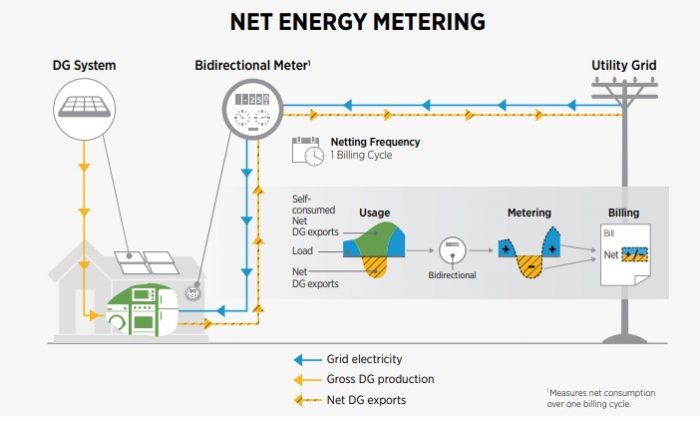
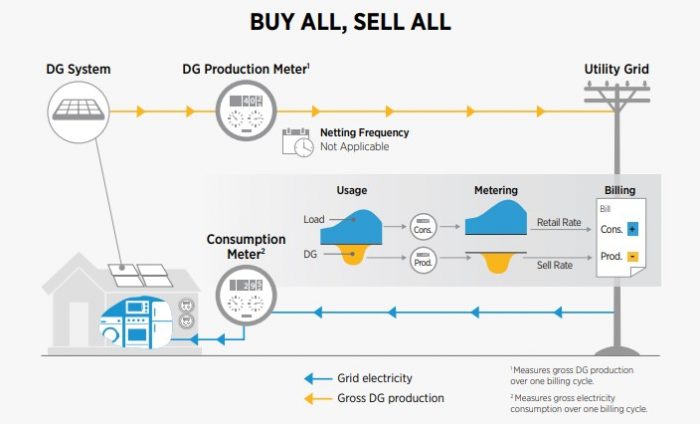
The excess solar power in the Hawaiian Electricity grid led to the end of the net metering program since the grid is able to safely operate and distribute the excess solar power until a certain limit. However, as you can see, this does not mean that solar power was over. As new communication technologies appear on the market and new constraints appear on the grid, new requirements for solar power equipment will be implemented, particularly related to inverters.
While traditional inverters convert all DC power from solar and send it to the grid, advanced inverters with grid support features will allow grid operators to control the energy flows from solar power installations to avoid grid-stability issues and ensure safe operation of the grid. If you are about to install a PV system it is better that you get smart-grid-ready.
What can I do with excess solar power if not injected back to the grid?
In the unlikely case that no other mechanism replaces net metering, how could you obtain the best from your solar power system?
Going off-grid is always a choice, however, if you have grid connection available, it is probably unjustifiable that you do not use that important resource. The best answer is to install a grid-tied with battery backup system that increases self-consumption where the excess energy is not injected back to the grid. Instead, it goes into an energy storage system under a Grid Zero mode of operation that avoids sending excess energy to the grid.
Finally, an important consideration is what to do when the energy storage device is completely charged and there is excess solar energy. The most optimum system will store this excess solar power as thermal energy in a hot water system. Sending the excess solar energy to the water heater will make sure that every kWh that your PV system generates will be used and will offset your consumption from the power grid to achieve revenues.
-Carlos Huerta is a trained solar engineer deeply involved in the solar industry with a background in the design of photovoltaic systems for the residential and commercial sector. He is a promoter of sustainable technologies and solutions with a passion for renewable energy. His website is ecotality.com.
Weekly Newsletter
Get building science and energy efficiency advice, plus special offers, in your inbox.





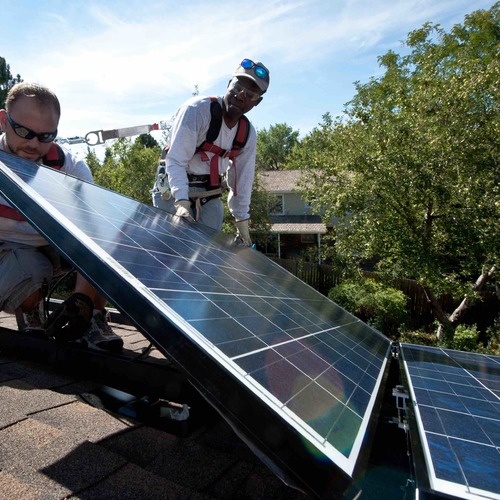
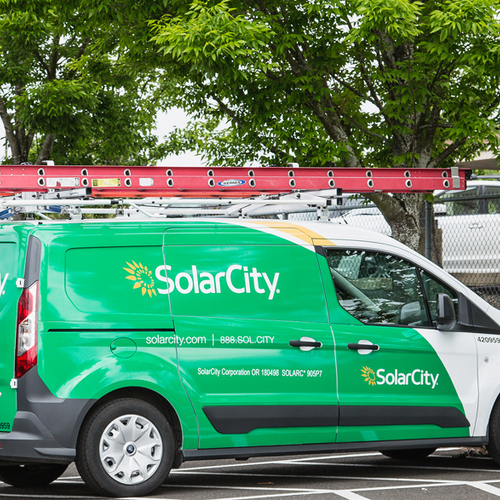
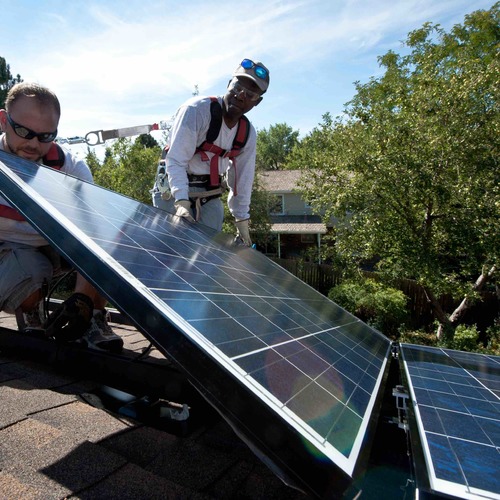
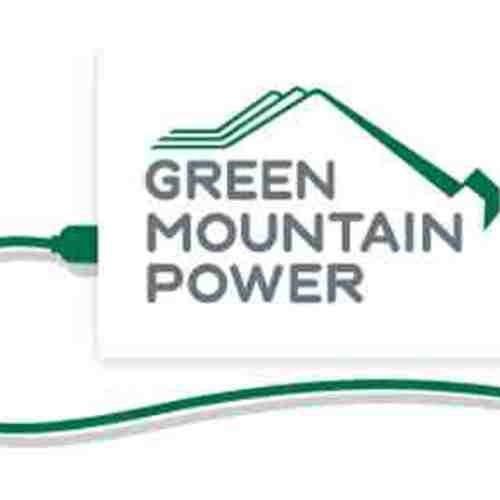






30 Comments
Contrary to the map, Maine has net metering.
It's simple and understandable, but eventually we'll probably need to switch to a more sophisticated system that measures the real benefits and costs of residential solar panels. If I send power to the grid when otherwise someone would be paying for extremely expensive power from a rarely used peaker plant, I should be paid more than when I'm sending power to the grid when it isn't needed and the wholesale price is zero or below.
Sure. If you are willing to be paid at the rate merchant plants are compensated. Power plants pay e t structure is 1/3 of retail.
Worked at a nuclear plant and power to grid costs were $.03 /kWh. Power company was billing $.10 to its residential customers
From the description, it sounds like the Iowa bill is a stalking horse for more junk fees and taxes on distributed solar generators. It's just a little to begin with, then every year it increases such that adding rooftop solar is more and more uneconomical. That is the unstated goal of monopoly plays like this one.
Stephen Sheehy's comment is right on- if the rooftop generators were fairly compensated for the power they produced at the time it was produced, the infrastructure that their power deferred, etc., it would be a fair trade. But who is in a political place to make those judgments? Certainly not the state-level regulators who are typically in thrall to the utilities.
Stephen Sheehy it sounds like you want residential and light commercial solar to be treated like a utility for selling. With time-of-day utility pricing. However that means you need to have all the controls (smart grid), PUCO requirements, etc in addition to just "sell back at utility pricing".
I can't think of a single successful business model that starts with the premise of buying a product at a retail price and reselling it at the same retail price....
That's why I mentioned UTILITY pricing. The utility would buy at the price other utilities would charge, and sell at retail. Not really viable for such small suppliers.
I thought net metering typically required that the utilities buyback power at the retail rate rather than the wholesale rate?
Utility scale solar has a huge cost advantage over residential scale. In a free, logical market (highly debatable if this will ever happen), net metering/demand rates will make new residential solar non viable. Utility electricity at noon on a sunny day will be cheaper than the cost of residential scale production.
On the other hand, I think that residential thermal storage has a bright future. Running a heat-pump at 8PM on a windless day will become increasingly inefficient.
Future theory: In 20-30 years when battery storage and solar are super cheap to buy, we'll see people unplugging from the grid en-masse and we'll have a drastically under-funded electrical infrastructure to deal with... driving up hydro prices and further bolstering the rooftop solar industry.
The problems of today will seem trivial. :-)
>"In 20-30 years when battery storage and solar are super cheap to buy, we'll see people unplugging from the grid en-masse..."
Not too likely. The amount of on-site storage and infrastructure for going off grid and managing the peak site loads will still be pretty expensive relative to paying monthly connection fees to maintain the local grid.
The distribution grid can also become valuable to those overproducing power, if the regulations allow selling that power to under-producing or over-shaded neighbors. When the local grids are managed to enable the so called "prosumer" (producer-consumer) everybody wins, even while the traditional utility/ratepayer model is still active for some or most.
But in 20-30 years the cost of curtailment of residential solar may be cheap enough that it no longer matters very much if it's net-metered or not. There are multiple technologies under R & D that could cut panel cost by another order of magnitude, while cutting the physical size of the array substantially. Unlike the unfulfilled early promise of nuclear, the future of PV eventually WILL become too cheap to meter even on incremental improvements. That's not likely to be in 20-30 years unless there is a disruptive breakthrough technology development along the lines of a spray-on thin film perovskite PV or something.
Also not likely as it is typically required to have such utilities connected. There are many news stories on "off grid" designed buildings being forced to connect to the local utilities. Or being forced to abandon and disconnect wells when city water becomes available. Same with septic/sewer systems.
In most cases such buildings are deemed "uninhabitable" unless the owners comply. I do not see this changing any in the near future.
Good points, both.
Dana, I can't help but feel we're already nearing the point of off-gridding (?) being viable for well built homes in CZ4 and below. With gas as a heat source, LED lighting, ECM fan motors etc. the electrical load on a house has come down quite a bit in recent times. If a battery and inverter can power a stovetop that's 90% of the battle. The rest is just capacity. Heating with a heat pump won't happen from solar any time soon, but the other three seasons shouldn't be much of an issue. If micro co-gen equipment ever becomes affordable there will be no need for an electrical grid connection. Yes, the argument then becomes CO2 emissions, but if people are already heating with gas they might as well generate electricity from it as well.
Nathan, if/when the day comes where there's enough public pressure to allow disconnecting from the grid, it will be pushed to the highest courts and become a serious political issue. To deem a home "uninhabitable" based on its utility connection status is pretty much unconstitutional. Yes I realize this is happening, but it's not right and should not continue. I'll be pretty ticked off if the city tries to force me onto water and sewer five years after I invested +50k into a well and septic!
Lance, the city/authority doesn't need to deem a home "uninhabitable." They'll simply expropriate it via eminent domain and turn it into an energy generation, drug rehab, or other sponsored facility. You'll be free to complain -- maybe -- if you're willing to wait months or years for an agency or two to decide whether to consider your complaint. If the government wants you to do or not do something, they'll deem you as behaving contrary to the public good, and will have plenty of ways to compel you to comply.
It's worth noting that there is net metering and then there is net metering and they aren't the same -- Arizona is a great example of that.
Both major utilities in AZ (APS and SRP) offered the typical net metering at residential rates for quite a few years and residential solar installations increased year-by-year, as a result. Quite a few people were able to get to a steady-state $20/mo bill (minimum charge) for the year.
Then both utilities switched the rate plan for net metering to essentially "pay back" at wholesale rates, which are a tiny fraction of residential rates. That is to say, when you "buy" electricity from the grid, then you pay the residential rate but when you "sell" your excess to the grid, you are paid a fraction of that. It's extremely difficult to hit the minimum charge for the month, now.
That matters because without that parity -- even with the dramatically reduced solar equipment costs -- it's much harder to break even in any reasonable time frame.
And yep, residential solar installations are tanking because of that.
So yeah, Arizona has net metering but not really.
This is fairly typical of "dual metering" setups. While disappointing it is understandable as the utility still has to provide the infrastructure required to transport the energy produced. A system with a monthly service charge for connection, then level billing for electricity (in and out) would be fair. As long as they allow you to "bank" the excess anyway. I seem to recall one issue with net metering is that many utilities "reset" the level yearly and it was a "use it or lose it" situation. However they all seem to reset at the time of year when the average solar user would have the most saved up into the system . . .
Maine's net metering system uses a sort of rolling twelve month reset. I produce about 80% of my annual power use, so I never lose anything in the " bank. " But if over twelve months, I produce more than I use, I'd lose the excess. When I was planning to size my system for a new house, I deliberately aimed to produce a bit less than I thought I'd use, to avoid losing what is produced. That's not be great incentive.
you don't have net metering in Arizona because they aren't giving you a kWh of credit for the excess energy being sent to the grid.. they are just paying you a wholesale rate for your excess energy.
"Net metering is a billing mechanism that offers the chance for those with photovoltaic systems installed on their homes to receive a credit for every kWh that is injected back to the grid"
Montana PSC is likely to approve a demand charge this month or next, which, in various instances, may make solar (w/net-metering) more expensive than non-solar. This could be a test (stake in the ground) that may be a starting point to put all residential on demand charge billing, treating residential more like commercial. Seems like load-balancing/clipping through selective use of batteries and/or on-site solar and/or fossil-fuel generators (gasoline, diesel, natural gas) may become a reality to avoid high demand charges. Incentives for off-grid appear to be growing.
What's the current $/kWh of the best residential sized off-grid systems that never leave one without power?
Jon,
The cost would vary by location. In Fairbanks, Alaska, where winter sun is very rare, the cost would be very high indeed. Even in Vermont, where I live -- and where we can go three weeks with almost no sun -- the cost could be described as astronomical.
Agreed, figures would need to make location and cost assumptions. And probably include some generator use. But we have a "Is It Worth It?" article without even some sample figures.
Im in NY and have a 4.2kwh system installed in 2015, NY does net metering, I get 4 cents/kwh for my excess (utility rates, retail in NY with taxes and fees 25 cents/KWH and at the $20 monthly charge for net metering (my paying for the grid maintenance, the old acorn the utilities use for whacking me with more fees, because Im not paying retail for my electricity)
Until it gets to a point where it makes economical sense to buy a battery system to get off grid Ill just stay as I am BUT I do keep an eye on these kinds of bills because once it passes in one state the utilities will be trying it in every state
"Sending the excess solar energy to the water heater will make sure that every kWh that your PV system generates will be used and will offset your consumption from the power grid to achieve revenues." This statement seems to imply that water heaters have an unlimited capacity to store energy, which I don't think is correct. I'll bet that the TPRV in my net zero solar house would be literally letting off steam during the spring and fall when space heating and cooling are unnecessary.
Without net metering the break even cost analysis is a bit more difficult.
It could take 2-3x longer to break even, depending on the electric rates and the amount of compensation for your excess energy.
Charles makes a good point. A water heater has a limited quantity of water to heat up. Storing enough electricity in batteries for a whole house is still costly. What do you think about a larger hot water storage tank? When I prep a garage slab I usually fill the void with washed rock and compact it. Instead of washed rock I could fill that void with sand and pex tubing and insulate the wall, floor, and below the slab with closed cell foam. How much pex would I need to create a very large storage tank? Is that hot sand an efficient way to store energy. We would still need batteries for other electrical demands but fewer would be required.
Thoughts?
There are lots of ways to store thermal energy, but IMO, the most practical is a large, non-pressurized water tank. You can certainly store several days of heating/cooling at far lower cost than batteries.
Please give a real world example. In the far north of the US an average size home may use 10 therms (a million Btu's) per day. Describe the water storage needed and how is the heat energy in the water in the storage tank converted to heat for the house?
Doug look at the solar thermal storage used by solar water heating (flat panel or evacuated tube). The heat is usually extracted by hydronic heating. A large coil/loop of piping in the tank that the hydronic system passes fluid through to collect the heat for distribution. You can use underfloor heating, hot water radiators, a water-to-air heat exchanger in the supply air duct, etc.
Strange that "solar thermal is dead" (a though often expressed here) may no longer be valid. Zombie technologies!
Doug: Good questions. I live in Montana. If I was 100% electric I would need a normal supply of hot water in the am and in the evening. A garage bay is a readily available container that could store heat that would be used as pre heated water in a traditional water heater. Is that an efficient use of pex and closed cell foam versus a couple large insulated storage tanks??
Net metering usually means getting credit for feeding to the grid equal to what you pull out. Hawaii's programs pay you around 11 cents when you feed in, and charge you over 30 cents when you pull out. So not quite the same thing.
Log in or create an account to post a comment.
Sign up Log in